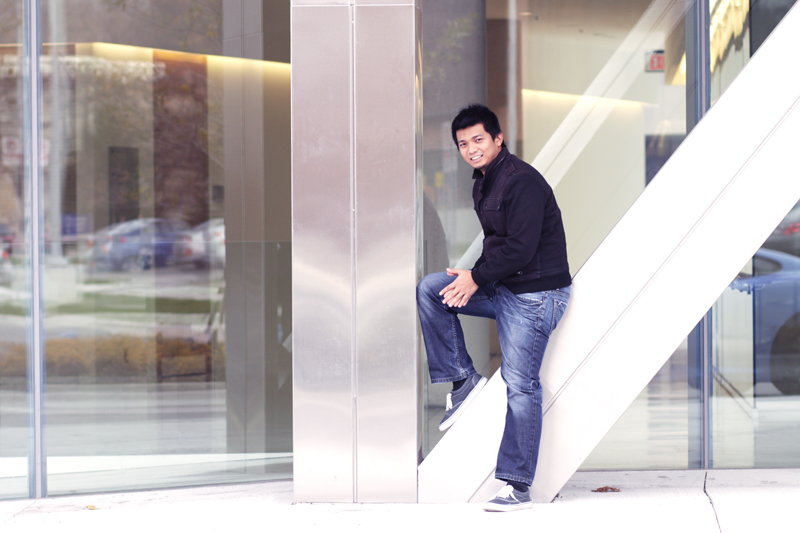
One doesn’t need to go all the way to Harvard to find the Mark Zuckerbergs of tomorrow. We talked to UTM’s very own web innovator Dan Cedric Arevalo about his online portfolio system, Fourthdraft, the creative process behind this new platform for artists and designers, and tips for finding success in business.
The Medium: Could you tell us a little about Fourthdraft?
Dan Cedric Arevalo: Fourthdraft is designed to be an online portfolio system for artists and designers to showcase their works of art online. This can range from images, videos, films, and animations [to] anything visual they may have and wish to display.
TM: What brought about or inspired the idea of Fourthdraft?
DCA: The reason Fourthdraft came to be is that I personally needed a portfolio for myself. I’m a freelance web developer and designer, and every time a prospective client would ask to look at my portfolio, my answer ended up being “no”—I just didn’t have one. It really came down to the need to have my own portfolio. Once I created my own online portfolio, eventually I realized that with two or three steps more I could make this idea public. A lot of people can use this, and a lot of people like myself have a need to display their work to potential clients. Hence, Fourthdraft was created.
TM: When starting this website, were there any difficulties or things you needed to consider before the project could take off?
DCA: Yeah, I had to consider a lot of things. As a web developer, I’m usually responsible for the technical side, but I had to cover everything else with Fourthdraft as well: the name, the logo, planning, who will be involved. A lot of external factors. A lot of planning. Usually, with me it’s mostly just developing the site and testing the site, but with Fourthdraft, I had to do more. I had to showcase the site, advertise the site, plan the launch party—things that were exciting but also challenging, and new.
TM: What benefits does Fourthdraft provide for artists creating their online portfolio that other similar websites might not give them?
DCA: While I had the initial intention of making a fee system for Fourthdraft, I decided to scratch that idea. It is now free and will remain free. The way I designed Fourthdraft was to make it easy for users to upload their stuff—no fancy, elaborate, or complicated steps. Once you log in, everything is pretty much right in front of you. It’s just meant for you to upload your stuff [and] organize your stuff, but still be easy for you to customize your portfolio as well. It’s just as easy as clicking a button or ticking an option. I would say simplicity is a big strength of Fourthdraft. Also, when you contact the site and let us know about a feature you think is missing, you’ll get a response right away and you’ll see that development come to life.
TM: Fourthdraft is aimed at artists and designers hoping to display their original artwork in an online portfolio, but have you had users use Fourthdraft in other ways? Would you recommend other forms of usage?
DCA: Well so far many users are using it for its main intention: to showcase their work to clients. But other than that, I’ve heard of someone who uploaded his work and is using Fourthdraft as a submission system. He’s using Fourthdraft for his professor and his design class. That being said, it is free, and no matter what I say or do, users can utilize it as they would like—as long as they keep it professional. It is meant to be a professional platform.
TM: I noticed on your website that Fourthdraft is currently “reconstructing its business model”. What changes can Fourthdraft users expect in the coming months? What is the next step for Fourthdraft?
DCA: I just finished implementing the blog option on Fourthdraft. We’ve asked some artists, designers and photographers using our service, and they are big on blogs. It provides another creative outlet for them, and it’s something that our users need and want. Our next step would be to polish the blog. We have the basic skeleton up and running. You can use that right now. Other than that, what we’re really trying to do is present more reasons for users to come and use our website. Right now we’re trying to contact employers; we’re partnering with a few Toronto advertising companies, and just trying to build a userbase—a community.
TM: Given the challenging task that is creating and designing not only your own website but your own business, what advice would you give students hoping to or currently trying to start their own enterprise?
DCA: Commit and be passionate about what you want to do. Some people have the resources and time, but they don’t choose to commit to the task. For me, I created Fourthdraft during the summer with the intention of finishing it before September. I would start work around 10 a.m. and finish around 11 p.m. Then I wouldn’t be able to sleep because I’d just be thinking about what I could add. You need the drive to do it. Try to develop a drive. It’s not just the physical means of doing something but also having the emotional reason to do it and to follow through to the end.
Dan Cedric Arevalo is the owner, developer, and designer of Fourthdraft.com. Check out Dan’s own design work at his Fourthdraft profile, dancedric.fourthdraft.com.



